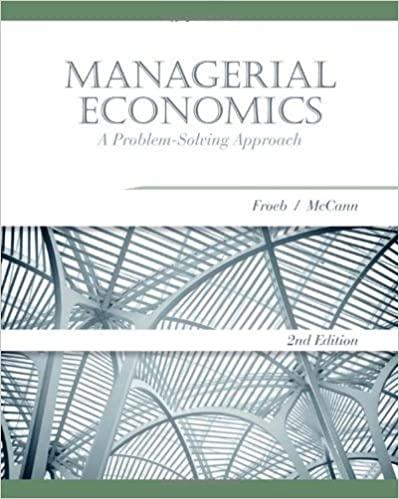Question
Read the case study entitled AIRLINE and answer the following questions: AIRLINES The airline industry has very marked differences in structure between the United States
Read the case study entitled"AIRLINE"and answer the following questions:
AIRLINES
The airline industry has very marked differences in structure between the United States and Europe. US airlines were deregulated in 1978, leading to intense competition on many routes, bankruptcies and mergers. In Europe the airlines have remained highly regulated, with governments protecting their own largely state-owned airlines. The deregulation in the US has led to much lower fares per passenger-mile and has caused some radical changes in structuring and therefore unit costs. Economies of scale arise if airlines can make use of a single type of plane. For example, Southwest Airlines only flies the Boeing 737, while the struggling US Airways uses a number of different aircraft. This was largely because US Airways came into existence as a result of a series of mergers. Southwest can therefore reduce its maintenance costs, crew training and scheduling costs compared with US Airways. This was reflected in the fact that in 1993 its costs were only 7 cents per available seat mile, compared with over 11 cents for US Airways. Economies of scope are also very important in the airline industry. Clearly it is cheaper for an airline to carry passengers and freight in the same aircraft than carry them in separate aircraft. However, the most important economy of scope arose from a change in routing: instead of having a large number of point-to-point services between different cities, airlines like Southwest and Continental switched to using a 'hub and spoke' system. This meant that customers flew from one city to a central hub, and then from there to their final destination. This gave these airlines a number of advantages. They could fly a much larger number of routes, in terms of joining city-pairs, with a given number of aircraft and miles flown. This would attract more passengers. Since these passengers all landed at the hub, before being transferred to their final destination, it allowed the airlines to fill the flights more comprehensively. It also became possible to combine passengers with different characteristics more effectively; thus routes that largely carried business passengers could now attract vacation customers. The above economies of scale and scope have not prevented many airlines from getting into serious financial difficulties recently. Although the events of 11 September 2001 did not help the industry, there were already many problems brewing in terms of overcapacity and industrial relations. Many airlines now appear likely to go out of business unless they receive government subsidies, a controversial issue.
Questions:
1 Explain how you would conduct an empirical study to investigate the availability of economies of scale in the airline industry.
2 What implications are there regarding mergers of different airlines?
3 What disadvantages might be incurred with the hub and spoke system compared with the point to-point system?
4 Explain why the hub and spoke system relates to economies of scope rather than economies of scale.
Step by Step Solution
There are 3 Steps involved in it
Step: 1

Get Instant Access to Expert-Tailored Solutions
See step-by-step solutions with expert insights and AI powered tools for academic success
Step: 2

Step: 3

Ace Your Homework with AI
Get the answers you need in no time with our AI-driven, step-by-step assistance
Get Started


